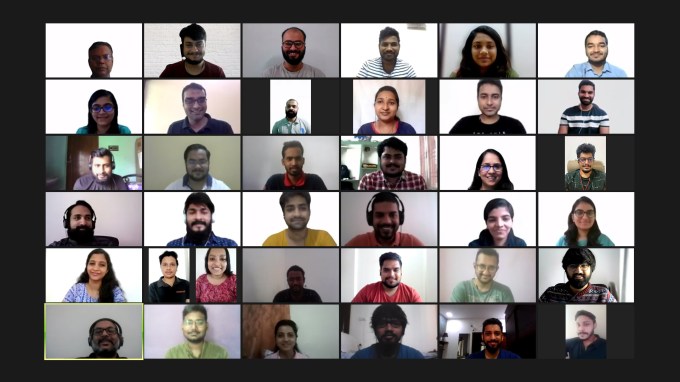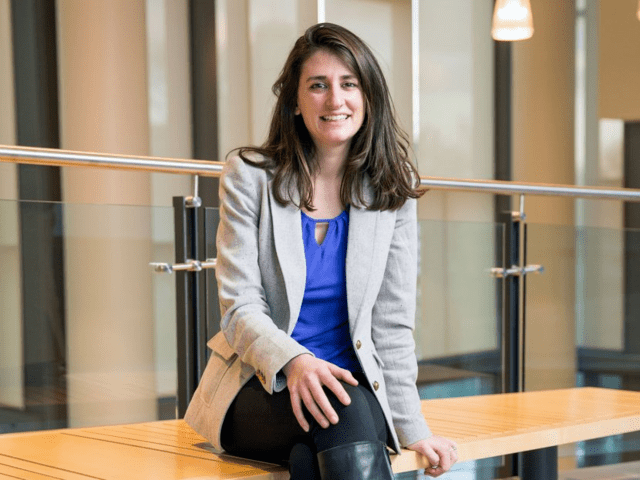California DoorDash workers protested outside of the home of DoorDash CEO Tony Xu on Thursday, prompted by a recent California Superior Court Judge ruling calling 2020’s Proposition 22 unconstitutional. Prop 22, which was passed last November in California, would allow app-based companies like DoorDash, Uber and Lyft to continue classifying workers as independent contractors rather than employees.
A group of about 50 DoorDash workers who are affiliated with advocacy groups We Drive Progress and Gig Workers Rising traveled caravan style to the front of Xu’s house in the Pacific Heights neighborhood of San Francisco. They demanded that DoorDash provide transparency for tips and 120% of minimum wage or around $17 per hour, stop unfair deactivations and provide free personal protective equipment, as well as adequate pay for car and equipment sanitizing.
“Dasher concerns and feedback are always important to us, and we will continue to hear their voices and engage our community directly,” a DoorDash spokesperson told TechCrunch. “However, we know that today’s participants do not speak for the 91% of California Dashers who want to remain independent contractors or the millions of California voters who overwhelmingly supported Proposition 22. The reality is, the passage of Prop 22 has addressed in law many of the concerns raised today through its historic benefits and protections: workers earn 120% of their local minimum wage per active hour in addition to 100% of their tips, receive free PPE and enjoy access to healthcare funds.”
DoorDash drivers say getting paid for the time they’re “active,” meaning actively driving to either pick up food and drop it off, rather than when they’re online and waiting for gigs to come through, leads to inadequate pay. They also say much of their living wage comes from tips, which should be an added bonus, but ends up helping make ends meet based on DoorDash’s pay structure. Prop 22 is also meant to guarantee a reimbursement of 30 cents per engaged mile, which drivers say “would be great if it were true.” DoorDash did not respond to follow ups regarding its pay structure or claims from dashers that they have not been given free PPE.
Rondu Gantt, a gig worker who’s been working for DoorDash for two and a half years and also drives for Uber and Lyft to get by, says his base pay from DoorDash is often as low as $3 per hour, and that around 40% to 60% of his money comes from tips. Although this model sounds similar to the restaurant industry in the United States, which can be quite lucrative for servers and bartenders, for a delivery driver, it’s an unsustainable way to make a living because tipping culture isn’t nearly as strong.
“DoorDash pays so low because they want to make it affordable for the customer, but I would say for the driver it becomes unaffordable,” Gantt told TechCrunch, citing the costs of owning, maintaining, parking and fueling a vehicle as potentially crippling. “Last week, I drove for 30 hours and I made $405. That’s $13.50 per hour, which is below minimum wage.”
Gantt said drivers also have had to deal with pressure to drive in unsafe conditions, and we can look to the images of delivery drivers in New York City during Hurricane Ida as an example of some conditions drivers feel compelled to accept. Over the past two years, DoorDash drivers have also been deemed essential workers, interacting with and providing services for many people during a pandemic at the risk of their health.
Gig Workers Rising says DoorDash workers “have received little to no safety support” with some workers reporting “being reimbursed as little as 80 cents per day for cleaning/sanitizing equipment and PPE that they use to keep themselves and customers safe.”
“Right now gig work isn’t flexible,” a spokesperson for Gig Workers Rising told TechCrunch. “Workers are at the mercy of when there’s demand. If they were employees the work would change as they’d work in the knowledge that they’ve healthcare and can take a sick day off.”
Because Prop 22 was ruled unconstitutional, the spokesperson said by rights it shouldn’t be in operation.
“The gig corporations violate that law everyday by choosing not to comply with it,” he said.
For Gantt’s part, he doesn’t necessarily want to be an employee, he just wants to make sure that he’s being paid what he deserves.
“Which is not minimum wage,” he said. “Minimum wage would be unacceptable as well. The cost of doing this, the danger, makes minimum wage unacceptable pay. And realistically, they’re only sometimes paying you minimum wage before taxes. After taxes you’re definitely making less.”
TechCrunch was given access to DoorDash workers’ dashboards that break down their pay. For the week of July 12 to July 19, one dasher was paid a total of $574.21 for 53 deliveries, $274 of which came from customer tip. His “active time” was 14 hours and 21 minutes, and his “dash time,” or when he was logged onto the app waiting for gigs to come through and doing deliveries, was about 30 hours.
The dasher’s “guaranteed earnings” from DoorDash for the week was $300.21. (DoorDash did not respond to clarification on how guaranteed weekly earnings are calculated or what they’re based on, but a post on the company’s site says that guaranteed earnings are incentives for dashers in specific areas.) His base pay ended up at about $257.62, but DoorDash added an additional $42.59 to adjust to guaranteed earnings. If we divide the amount DoorDash paid by the number of hours of “active time,” the worker was paid about $21 per hour. If we divide it by the “dash time,” it looks more like $10 per hour.
Again, this is before tax. Independent contractors are usually advised to put aside around 30% of their paycheck because they have to pay self-employment tax, which is 15.3% of taxable income, federal income tax, which varies depending on tax bracket, and potentially state income tax. After taxes, this dasher’s total pay for 30 hours of work, including his $274 worth of tip, would be around $402, which comes out to $13.40 per hour.
Tips were of concern at the protest on Thursday as drivers called for transparency. Gantt says dashers can see a cumulative amount of tip earnings per week, as well as how much tip they’re receiving from each order, but they don’t trust the amount they’re receiving is actually the amount customers are tipping them.
Gantt and other drivers aren’t just being paranoid. Last November, DoorDash agreed to pay $2.5 million to settle a lawsuit alleging the company stole drivers’ tips and allowed customers to think their tip money was actually going to the drivers. The suit, filed by Washington, D.C. attorney general Karl Racine, alleged DoorDash reduced drivers’ pay for each job by the amount of any tip.
One of the rallying cries of the protest was for Xu to “share the wealth.” In 2020, the CEO was reportedly the highest paid CEO in the Bay Area, making a total salary of $413.67 million. During the second quarter, DoorDash saw a $113 million profit adjusted for EBITDA, but was overall unprofitable with a net loss of $102 million.
“We all work for money and how that money gets distributed when they go through their earnings is telling you who matters and who doesn’t matter,” said Gantt. “It’s a clear sign of who’s important, who has value. If they don’t pay you, they don’t value you.”



 (@jacksondame)
(@jacksondame) 
 Oh right, people could make or generate stats too!
Oh right, people could make or generate stats too!
 (@john_c_palmer)
(@john_c_palmer)  a collab with
a collab with 

